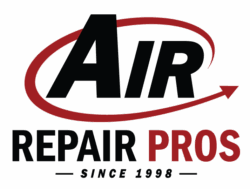If you’re ready to replace your outdated HVAC system, one of the first steps is evaluating your heating and cooling needs.
In an older house, there are several factors to think about. Your home may not have ductwork, or larger rooms might negatively impact HVAC efficiency. This guide will help you choose the best type of system for your house.
Should I Replace a 20-Year-Old HVAC System?
Yes, it is time to replace your HVAC system. After two decades of service, your current system has lived longer than most heating and cooling equipment. It probably doesn’t perform efficiently or meet your climate control needs. Since your older home may not have an energy-efficient design, investing in the right HVAC system is essential.
Will My Homeowner’s Insurance Cover My HVAC Replacement?
There are only a few ways that an insurer will cover the cost of replacing your old HVAC system. Fire, storm damage, vandalism, and theft are the most common situations in which a homeowner’s policy covers this type of expense. Some policies cover a system replacement if it suffers water damage.
You’ll have to show a good faith effort to protect the equipment, so participating in HVAC maintenance plans can help. If you’re unsure, review your policy with your insurance agent. They can explain your coverage and recommend policy changes to improve your coverage.
Top HVAC Choices for Older Houses
There are plenty of choices when it comes to replacement HVAC systems, but not every model is suited for every home. The following recommendations are specific to older homes.
Ductless Mini Splits
This is the best HVAC system for historic homes since the indoor air handlers connect with minimal disruptions. It’s easier to protect an older home’s architecture with a mini split. You’ll also avoid the need to install ductwork that might otherwise harm the home’s structure.
Each air handler services one room, and you can connect a maximum of seven air handlers to a single outdoor compressor.
Heat Pumps
You can find traditional heat pumps that use your home’s existing ductwork, or you can go ductless. Since a heat pump uses electricity to transfer heat, it eliminates the use of flammable fuel during the heating process. In the summer, simply switch the heat pump to the cooling mode.
This is also one of the more energy-efficient HVAC systems, making it a better choice for large, drafty houses.
VRF Systems
Ask your HVAC installers if they’re familiar with variable refrigerant flow (VRF) systems. This is a newer system, but it’s growing in popularity. It looks similar to a traditional HVAC system with an indoor air handler and an outdoor compressor.
Instead of using ductwork, the technician installs fan coils throughout the home. Each set of coils connects to a refrigerant line.
By adjusting the flow of refrigerant, homeowners can switch between heating and cooling. Since you can use the coils to create different climate zones, VRF technology offers superior efficiency over traditional equipment.
Trust the HVAC Leaders With Your System Replacement
By working with Air Repair Pros, you’ll enjoy our high-quality skills and dedication to total customer satisfaction. We can help you choose an HVAC system and customize the installation for your historical home. Contact us to request an estimate or schedule service today!

